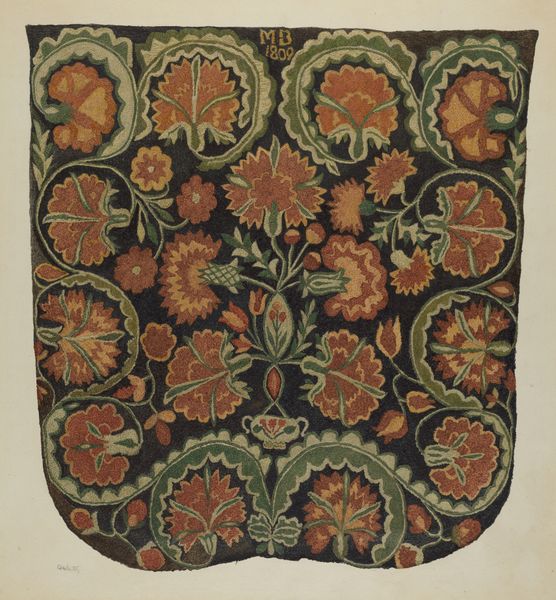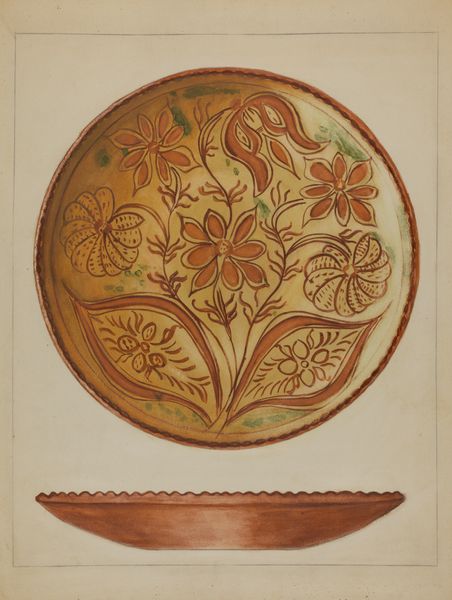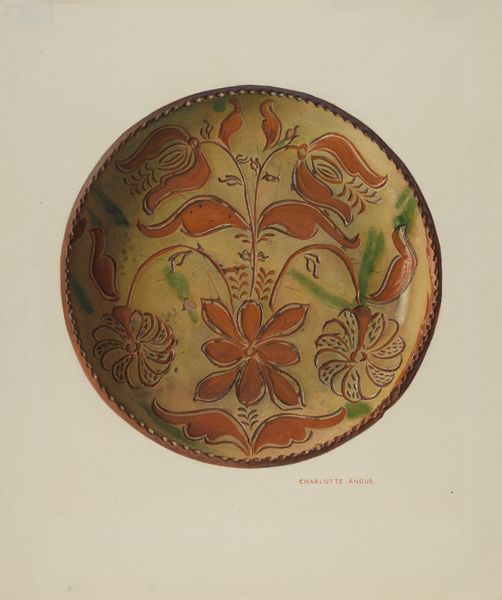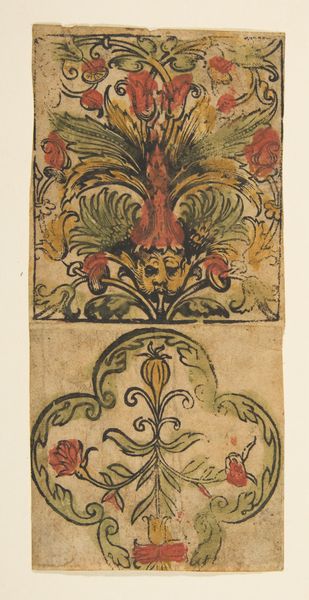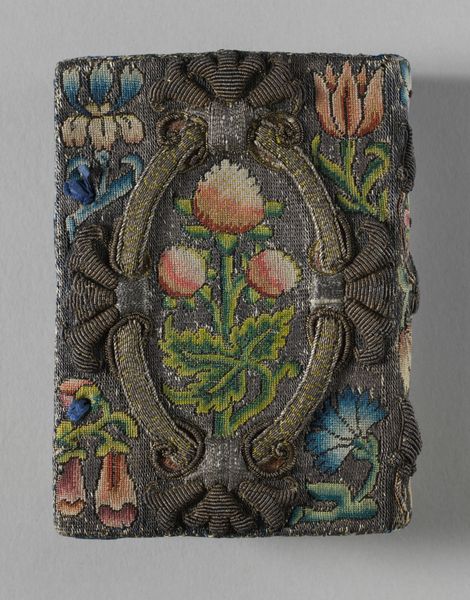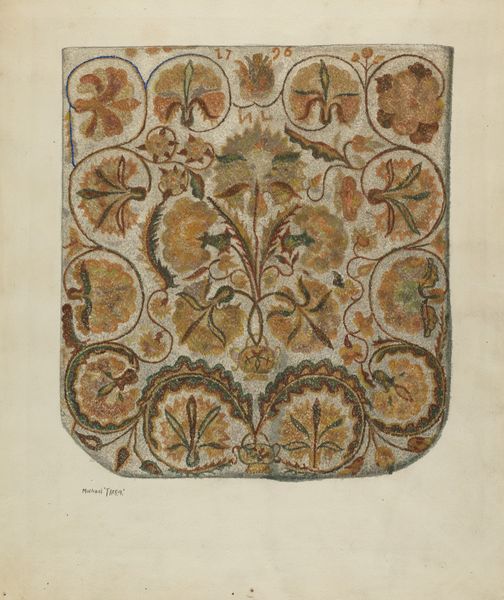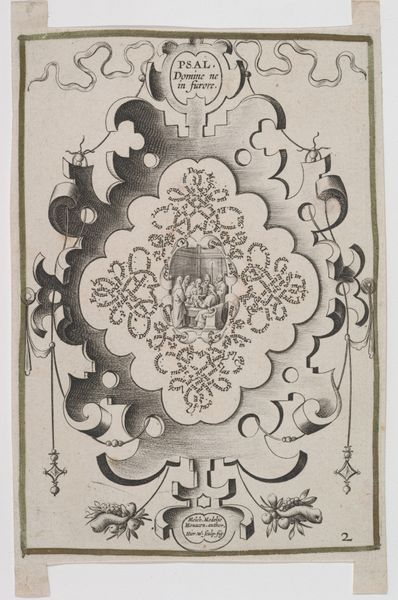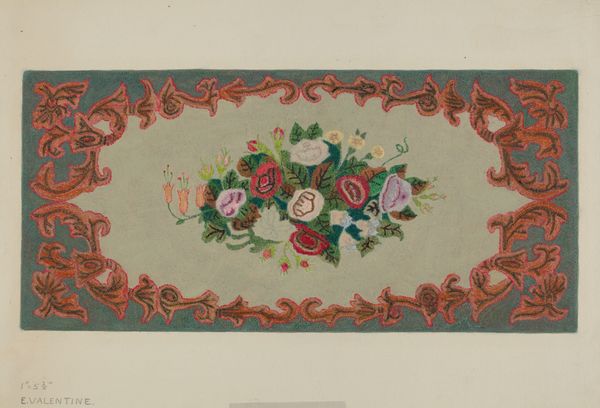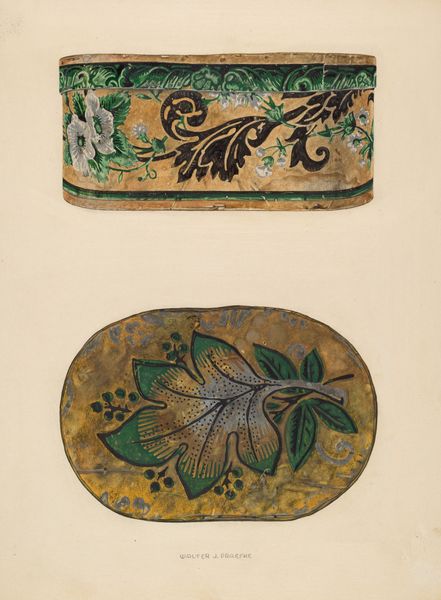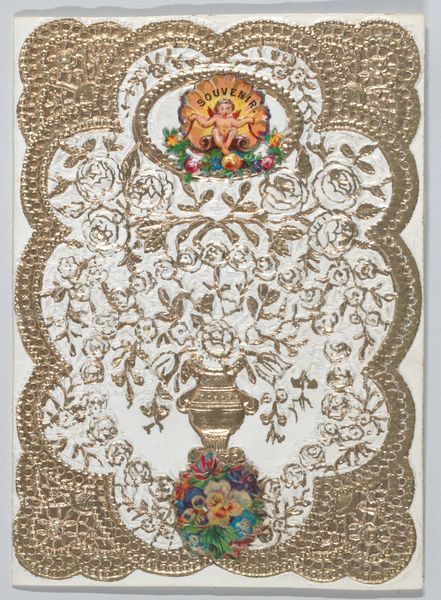
drawing
#
drawing
#
folk-art
#
decorative-art
#
watercolor
Dimensions: overall: 51 x 38 cm (20 1/16 x 14 15/16 in.) Original IAD Object: 7" high; 18" wide
Copyright: National Gallery of Art: CC0 1.0
Editor: Here we have Frances Lichten’s "Pa. German Bride or Cap Box," dating from around 1937, a drawing rendered in watercolor. I’m really drawn to the symmetry and stylized floral elements. How do you approach this piece, focusing on its intrinsic qualities? Curator: A close formal analysis reveals several key elements. Consider first the composition: Lichten meticulously balances the positive and negative spaces. The arrangement of the floral motifs, both in the oval lid and on the box itself, creates a rhythmic pattern, doesn't it? How do you interpret the repetition? Editor: It almost feels like a visual echo, binding the two parts—lid and box—together harmoniously. The stripes, too, are visually satisfying. Curator: Precisely. The contrasting colors further enhance this visual rhythm. The earthy red, green, and yellow tones juxtapose intriguingly, creating a vibrant yet grounded palette. Note, too, the flatness of the picture plane. Lichten avoids any illusion of depth. Why might that be significant? Editor: Perhaps to emphasize the decorative nature of the drawing, underscoring that it is about surface and design rather than representation? Curator: Indeed. It draws attention to the pure, unadulterated form and pattern. This is the essence of decorative art and, indeed, of Lichten’s focus. The formal properties themselves become the subject. Editor: It’s interesting how focusing on composition, color, and the avoidance of depth can reveal so much about the artwork's purpose. Thanks, this gives me a new lens for analysis. Curator: My pleasure. Considering form first truly refines our understanding, allowing context to deepen that understanding further.
Comments
No comments
Be the first to comment and join the conversation on the ultimate creative platform.
